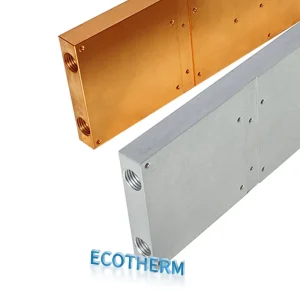Axially Grooved Heat Pipe (AGHP)
Key feature
- Usually aluminum alloy extrusion channel
- Usually aluminum ammonia heat pipe
- Low temperature working medium can be used as deep low temperature cooling device
- It can be used in microgravity environment or horizontal posture · Large heat transfer
.webp)
-2.webp)
-3.webp)
Grooved Heat Pipes (GHPs), typically fabricated from aluminum alloy, feature axial Ω-shaped or geometrically optimized grooves along their inner walls, replacing traditional capillary wicks. In microgravity environments, the two-phase working fluid (commonly ammonia) flows through these grooves to complete the phase-change cycle. The operational mechanism of an Axially Grooved Heat Pipe (AGHP) involves the following steps:
Liquid ammonia evaporates in the heated section.
Vaporized ammonia flows through the central axial channel toward the condensation zone, driven by pressure differentials.
Heat is released, causing the vapor to condense.
Liquid ammonia returns to the evaporator via the grooved channels near the pipe walls, enabling efficient and reliable heat transport.
Compared to conventional heat pipes, AGHPs offer distinct advantages:
Lightweight Construction: Aluminum alloy reduces mass, critical for aerospace systems.
Simplified Architecture: Eliminates complex wick structures, enhancing reliability.
High-Power, Long-Distance Heat Dissipation: Ideal for weight- and volume-constrained applications, such as satellite honeycomb panels.
As a cornerstone technology in spacecraft thermal control subsystems, particularly thermal management networks, AGHPs provide robust thermal regulation for missions requiring precision and durability under extreme conditions.


